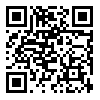1. Jishankar K, Malek Mohammadi HR, translated. Cyberspace Criminology: The Discovery of Cybercrime and Criminal Behavior. Mizan Publishing, 2015.
2. Little D, Shinder J, Tittel E. Scene of the Cybercrime: Computer Forensics Handbook. MA: Syngress Publishing, Inc. Rockland. 2002.
3. Kirwan G, Power A. Psychology of Cyber crime, Business Science Reference, 2012,1, p: 375. [
DOI:10.4018/978-1-61350-350-8.ch001] [
PMCID]
4. Lickiewicz J. Cyber Crime psychology-proposal of an offender psychological profile. Problems of forensic sciences. 2011;2(3):239-52.
5. Middleton D, Elliott IA, Mandeville-Norden R, Beech AR. An investigation into the applicability of the Ward and Siegert Pathways Model of child sexual abuse with Internet offenders. Psychology, Crime & Law. 2006; 12(6):589-603. [
DOI:10.1080/10683160600558352]
6. Turvey BE, editor. Criminal profiling: An introduction to behavioral evidence analysis. Academic press; 2011 Mar 9. [
DOI:10.1016/B978-0-12-385243-4.00005-8]
7. Chandler A. The changing definition and image of hackers in popular discourse. International journal of the sociology of law (Print). 1996;24(2):229-51. [
DOI:10.1006/ijsl.1996.0015]
8. Bocij P. The dark side of the Internet: protecting yourself and your family from online criminals. Greenwood Publishing Group; 2006.
9. Cherati SG, Tabar IH, Qodsi SE. Punishment Analysis of Cyber Pornography in the Iranian Criminal Justice System. Journal of Politics and Law. 2019;12(4):107-112. [
DOI:10.5539/jpl.v12n4p107]
10. Hettema JM, Prescott CA, Myers JM, Neale MC, Kendler KS. The structure of genetic and environmental risk factors for anxiety disorders in men and women. Archives of general psychiatry. 2005;62(2):182-9. [
DOI:10.1001/archpsyc.62.2.182] [
PMID]
11. Vink D, Aartsen MJ, Schoevers RA. Risk factors for anxiety and depression in the elderly: a review. Journal of affective disorders. 2008;106(1-2):29-44. [
DOI:10.1016/j.jad.2007.06.005] [
PMID]
12. Edition F. Diagnostic and statistical manual of mental disorders. Am Psychiatric Assoc. 2013;21.
13. Leahy RL, Holland SJ, McGinn LK. Treatment plans and interventions for depression and anxiety disorders. Guilford press; 2011.
14. Zhang X, Norton J, Carriere I, Ritchie K, Chaudieu I, Ancelin ML. Risk factors for late-onset generalized anxiety disorder: results from a 12-year prospective cohort (The ESPRIT study). Translational psychiatry. 2015;5(3):e536. [
DOI:10.1038/tp.2015.31] [
PMID] [
PMCID]
15. Sadeghi Shahrakhti J, Ahi Q. Investigation of factor structure, validity and reliability of the Criminogenic Cognitions Scale (CCS) in Students of Birjand University of Medical Sciences. J Birjand Univ Med Sci. 2019; 26(1):83-94.
16. Kinard J, Johnson J. Criminogenic risk assessments: What are they and what do they mean for your client? Voice for The Defense Online. 2014 October.
17. Barlow DH. Unraveling the mysteries of anxiety and its disorders from the perspective of emotion theory. American psychologist. 2000;55(11):1247. [
DOI:10.1037/0003-066X.55.11.1247]
18. Ranjbari T, Karimi J, Mohammadi A, Norouzi MR. An Evaluation of the Contributions of the Triple Vulnerability Model to the Prediction of Emotional Disorders. Iranian Journal of Psychiatry and Clinical Psychology. 2018; 23(4):408-423. [
DOI:10.29252/nirp.ijpcp.23.4.408]
19. Spinhoven P, Elzinga BM, van Hemert AM, de Rooij M, Penninx BW. A longitudinal study of facets of extraversion in depression and social anxiety. Personality and Individual Differences.
20. 2014; 71:39-44.
21. Abolmaali kh, Research on Narrative Analysis in Psychology, 2019,1,p:93. [Persian].
22. Corbin J, Strauss A. Theoretical sampling. Basics of qualitative research (3rd ed.): Techniques and procedures for developing grounded theory. 2008:143-59. [
DOI:10.4135/9781452230153]
23. Abedi HA. Qualitative Research. Quarterly Journal of the Seminary and University. 2005; 12 (42):62-79.
24. Barlow DH. Anxiety and its disorders: The nature and treatment of anxiety and panic. Guilford press; 2004 Jan 28.
25. Schaefer L. Environmental Corrections: Making Offender Supervision Work [dissertation]. Ohio: The University of Cincinnati; 2013.
26. Gavel DW. More than mere synonyms: Examining the differences between criminogenic thinking and criminogenic attitudes [dissertation]. Hattiesburg: University of Southern Mississippi; 2017.
27. Hooshyari Z, Delavar A, Minaee A, Eskandari H. Comparison of two approaches for measuring moral development: Neo-Kohlbergian approach and moral study challenges. Iranian Journal of Psychiatry and Clinical Psychology. 2018;24(1):30-43. [
DOI:10.29252/nirp.ijpcp.24.1.30]
28. Kadivar P. [Moral psychology (Persian)]. Tehran: Agah Publication; 2004.
29. Bach B, Bernstein DP. Schema therapy conceptualization of personality functioning and traits in ICD-11 and DSM-5. Current Opinion in Psychiatry. 2019;32(1):38-49. [
DOI:10.1097/YCO.0000000000000464] [
PMID]
30. Lickiewicz J. Cyber Crime psychology-proposal of an offender psychological profile. Problems of forensic sciences. 2011;2(3):239-52.
31. Ball SA, Young JE. Dual focus schema therapy for personality disorders and substance dependence: Case study results. Cognitive and Behavioral Practice. 2000;7(3):270-81. [
DOI:10.1016/S1077-7229(00)80083-8]
32. Soltani A, Mohammadian A, Heydari DA, Mohammadkhani P. A Comparative Examination of Maladaptive Schemas in Sex Addicts and Normal Individuals. Practice in Clinical Psychology. 2016; 4(3):159-166. [
DOI:10.15412/J.JPCP.06040303]





